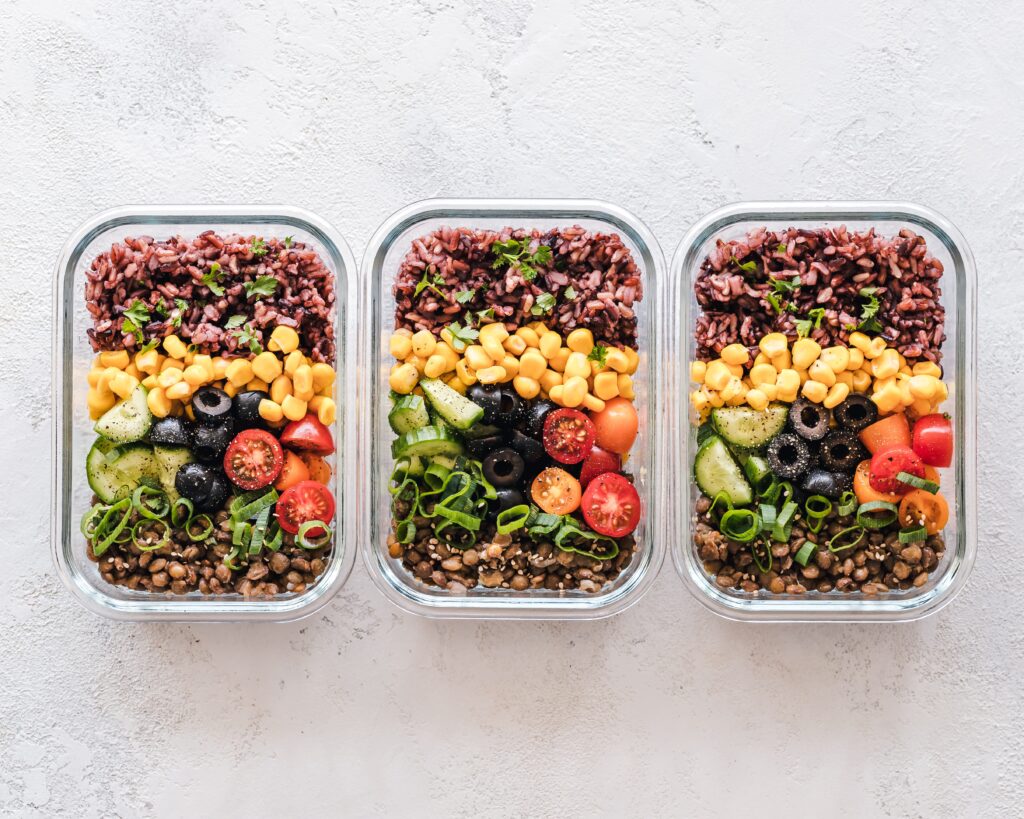Eating Well on a Budget: Smart and Simple Ideas with a Bonus Grocery List

Many people believe that eating healthy is expensive, but with some planning and smart choices, it’s entirely possible to maintain a nutritious diet without breaking the bank. Let’s explore effective strategies for eating well on a budget and provide you with a sample grocery list to get you started on your journey to affordable, healthy eating.
1. Plan Your Meals and Create a Budget
The first step to eating well on a budget is to plan your meals and set a spending limit. Firstly, create a weekly or monthly meal plan that includes breakfast, lunch, dinner, and snacks. Determine the number of meals you’ll need to prepare and the portion sizes required to avoid food waste. Likewise, allocate a specific budget for groceries and stick to it.
2. Buy in Bulk
Buying staple foods in bulk can save you a significant amount of money in the long run. For example, items like rice, pasta, beans, and canned goods can be purchased in larger quantities and stored for extended periods. However, just make sure you have proper storage containers to maintain freshness.
3. Embrace Seasonal and Local Produce
Seasonal fruits and vegetables are not only fresher but also more affordable. For example, visit local farmers’ markets or look for sales at your grocery store to take advantage of lower prices on in-season produce. Buying locally grown items can also reduce transportation costs, making them a budget-friendly choice.

4. Opt for Frozen and Canned Produce
However, if fresh produce is expensive or not readily available, frozen and canned options are excellent alternatives. Moreover, they often retain their nutritional value and can be more cost-effective. Just be mindful of added salt and sugar in canned items and choose products with no added preservatives whenever possible.
5. Cook at Home
Indeed, eating out can quickly drain your budget. Cooking at home allows you to control ingredients and portion sizes while saving money. Additionally, invest in essential kitchen tools and utensils to make meal preparation more manageable.
6. Plan for Leftovers
Cooking larger batches and planning for leftovers can save you time and money. Make double portions of meals that freeze well, like soups, stews, and casseroles, and enjoy them on busy days when you don’t have time to cook.

7. Limit Processed Foods
Processed and convenience foods often come with a higher price tag and lower nutritional value. For example, cut back on items like pre-packaged snacks, sugary cereals, and frozen meals. Instead, choose whole foods that you can prepare and season yourself.
8. Use Coupons and Discounts
Certainly, take advantage of coupons, discounts, and loyalty programs offered by your local grocery stores. Online coupon websites and apps can also help you find deals on items you regularly purchase.
9. Compare Prices and Shop Sales
Comparison shopping is essential when trying to save money on groceries. But, be sure to compare prices across different brands and sizes. Pay attention to sales, discounts, and promotions, but only buy items you genuinely need.
10. Reduce Meat Consumption
Meat can be one of the more expensive components of a meal. So, consider incorporating meatless meals into your weekly menu by using affordable protein sources like beans, lentils, tofu, and eggs. When you do buy meat, choose less expensive cuts or consider buying in larger quantities and freezing portions.
Sample Grocery List

Now, let’s put these strategies into practice with a sample grocery list for a week of healthy meals:
Proteins:
- Chicken thighs (buy in bulk and freeze portions)
- Canned tuna (however, make sure it’s in water, for salads and sandwiches)
- Eggs
- Black beans (dry or canned)
- Tofu or tempeh
Grains and Carbohydrates:
- Brown rice (buy in bulk)
- Whole-grain pasta
- Oats (for breakfast and baking)
- Whole-grain bread
- Quinoa (buy in bulk)
Fruits and Vegetables:
- Apples (in-season)
- Bananas
- Carrots
- Spinach (or another leafy green)
- Bell peppers
- Onions
- Tomatoes
- Canned tomatoes (for sauces)
- Broccoli (or another green vegetable)
Dairy and Dairy Alternatives:
- Low-fat milk (or another plant-based milk)
- Greek yogurt (or another non-dairy yogurt)
- Cheese (choose block cheese and grate yourself to save money)
Pantry Staples:
- Olive oil
- Vegetable oil
- Spices and herbs (buy in bulk or refill containers)
- Canned beans (variety)
- Canned soup (low-sodium options)
- Peanut butter or almond butter
- Nuts and seeds (for snacking or garnishing)
- Whole-grain cereal (low-sugar)
- Dried fruits (for snacking or baking)
- Flour (for baking)
- Baking powder and soda (for baking)
- Sugar (limit use)
Snacks:
- Popcorn kernels (for air-popping)
- Hummus
- Baby carrots and celery (for dipping)
Beverages:
- Water (tap or filtered)
- Herbal tea (limit sugary drinks)
Extras:
- Reusable grocery bags
- Storage containers (for leftovers)
- Freezer bags (for bulk storage)
In conclusion, eating well on a budget requires thoughtful planning and smart shopping habits. However, by creating a meal plan, buying in bulk, choosing seasonal produce, cooking at home, and being mindful of discounts, you can enjoy nutritious and delicious meals without straining your finances.
Use the sample grocery list as a starting point, and customize it to fit your dietary preferences and needs. And lastly, remember that making healthier choices today can lead to long-term benefits for your well-being and your wallet.










